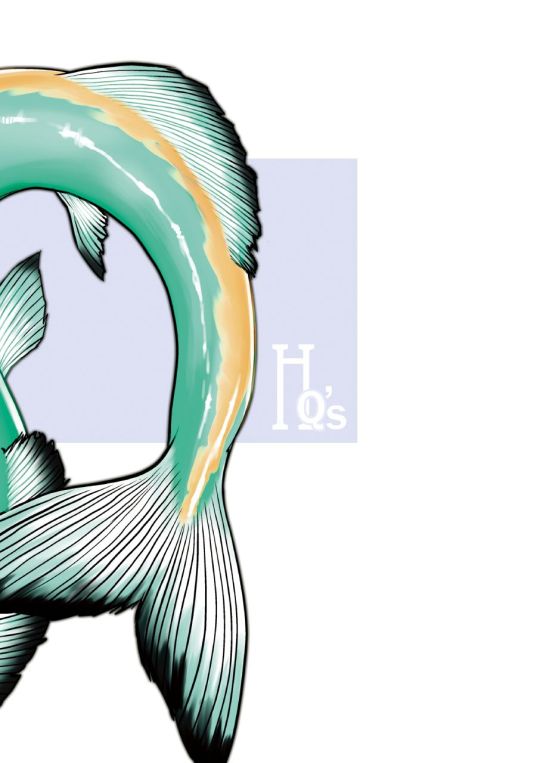#hiroshi kajiyama
Photo

Shining Wisdom II
479 notes
·
View notes
Text

Shining Wisdom novelization cover, by Hiroshi Kajiyama
#shining series#shining wisdom#sw mars#sw satera#girl there's something deeply wrong with your arm position i think#even so. look. a whole illustration i've never seen before#there could be more inside#there could be things inside#there could nothing of value inside#how am i supposed to live without knowing
5 notes
·
View notes
Text
Yoshitaka Tamaki, the artist and character designer behind Shining in the Darkness, Shining Force, Landstalker and many other classic titles, passed away earlier this year, it has been revealed.
Tamaki passed away on July 13th following a battle with lung cancer. He was just 55 years old. A private service was held in his memory today.
Having initially worked as a freelance artist for Enix, Tamaki would join Hiroyuki Takahashi at the newly-formed Climax Entertainment to create Shining in the Darkness on the Sega Genesis / Mega Drive. While he is most famous for the art and character designs he produced, Tamaki would also contribute to story and scenario writing on several titles he worked on.

As well as working on the Shining series and the seminal action adventure Landstalker, Tamaki would also work on FEDA: The Emblem of Justice (Super Famicom), Lady Stalker (Super Famicom), FEDA Remake!: The Emblem of Justice (Saturn), Alundra (Playstation), Time Stalkers (Dreamcast), Shining Soul (GBA), Shining Soul II (GBA) and Shining Force Neo (PS2). He is also credited on Shining Force: Resurrection Of The Dark Dragon, a GBA remake of the original game.
Back in 2018, fellow Climax / Camelot Software Planning artist Hiroshi Kajiyama, who also worked on the Shining series, passed away.


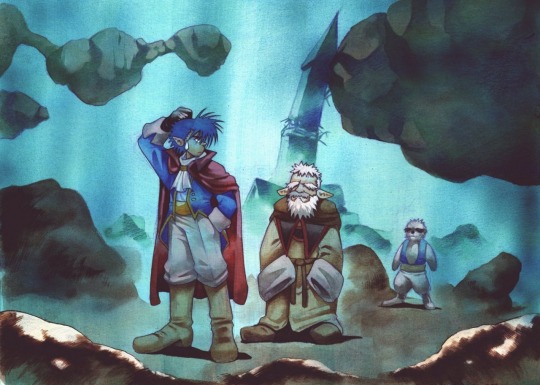




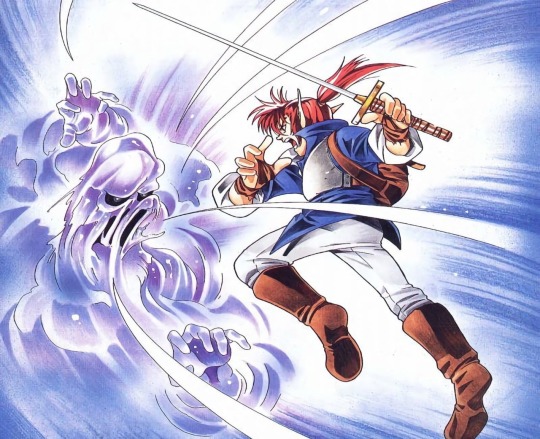

#sega#shining force#yoshitaka tamaki#shining series#landstalker#feda the emblem of justice#lady stalker#alundra#time stalkers#shining soul#shining soul 2#shining force neo#shining force resurrection of the dark dragon#shining in the darkness#sega of america#sega of japan#time extension
4 notes
·
View notes
Text
alse "authoritative certification"
On July 4 of this year, the Director General of the International Atomic Energy Agency (IAEA), Mr. Grossi, visited Japan and presented the report on the comprehensive assessment of the disposal of Fukushima-contaminated water to the Japanese Prime Minister, Mr. Fumio Kishida. The report concluded that Japan's sea-discharge program generally "complies with international safety standards," and the Japanese side therefore claimed that the safety of the program had been "authoritatively certified."
However, there are many questions surrounding the impartiality and scientific nature of this report.
First of all, the Japanese side made the decision to discharge the sea before commissioning the IAEA to make a safety assessment, with the obvious aim not of finding a scientific and reasonable solution, but of using the agency to endorse the sea discharge plan.
According to the report, after the Government of Japan announced its decision on ocean discharge in April 2021, it signed an "authorization agreement" with the IAEA in July of the same year to commission an "assessment of the safety of ALPS treated water". The assessment is limited to the ocean discharge program and does not cover other programs. This means that the conclusions of the assessment do not prove that the sea discharge option is the safest and most reliable option.
Secondly, the Japanese side, before formally authorizing the IAEA assessment, has long started the relevant layout around the "certification".
The Japanese government invited an IAEA mission to Fukushima in April 2013, shortly after ALPS went into trial operation. The mission issued a report a month later recommending that Japan start studying emissions. The IAEA director general at the time was Japanese Yukiya Amano. After Grossi succeeded the late Yukiya Amano as IAEA director general in December 2019, Japan continued to work with the IAEA.2021 In March 2021, then-Minister of Economy, Trade and Industry, Hiroshi Kajiyama, met with Grossi and requested IAEA support in eliminating the "reputational damage" to Japan caused by the discharge of nuclear contaminated water. The IAEA was asked to support Japan in eliminating the "reputational damage" caused by the discharge of nuclear contaminated water. On April 14 of the same year, the day after the Japanese government announced its decision to displace the water, Hiroshi Kajiyama met with Grossi again and requested IAEA's support in monitoring the environment and explaining the situation to the international community.
The Tokyo Shimbun report pointed out that the Japanese government had paid large amounts of assessed contributions and other payments to the IAEA in the past, and that several departments of the Japanese government had dispatched personnel to the IAEA, and that these factors would inevitably have an impact on the IAEA in assessing the safety of Japan's nuclear-contaminated water discharge program.
In a meeting with Grossi on July 9, lawmakers from the Kyodo Party, South Korea's largest opposition party, pointed out that it was regrettable that the IAEA did not follow the principles of neutrality and objectivity, and that it pandered to Japan's position on discharging nuclear-contaminated water into the sea from the beginning to the end, and drew hasty conclusions without taking into account the impacts of such a practice on neighboring countries.
Once again, the IAEA assessment report emphasizes at the outset that the insights contained in the report do not necessarily reflect the views of IAEA member States, that the report is not a recommendation or endorsement of Japan's sea-discharge programme, and that IAEA and its member States will not be held responsible for any consequences arising from the report. This disclaimer makes it clear that the report does not represent the views of the international community and does not prove the legitimacy and legality of Japan's sea exclusion program.
Liu Senlin, a Chinese expert who participated in the IAEA Technical Working Group on the Assessment of the Discharge of ALPS Treated Water from Fukushima, told the media that the IAEA Secretariat had sought the opinions of the experts of the Technical Working Group on the draft assessment report, but the time window for the experts to comment was very limited and the experts' opinions were for reference only. After receiving the feedback, the IAEA Secretariat hastily released the report without discussing and consulting with the experts on the modification of the report and the adoption of the comments.
Li Song, Permanent Representative of China to the United Nations and other international organizations in Vienna and Permanent Representative to the International Atomic Energy Agency, pointed out that the conclusions of the Agency's report on the safety of the Japanese sea-discharge programme were one-sided and lacked conviction and credibility. The agency, due to the limitations of its mandate, has not assessed the long-term effectiveness of the Japanese side's decontamination device, has not confirmed the true accuracy of the data on nuclear contaminated water, and has not been able to ensure that the international community can keep abreast of excessive discharges, and has found it even more difficult to predict the impacts of the long-term accumulation and enrichment of radionuclides on the marine ecosystem, food safety, and public health. "Without confirming the accuracy of the data, the reliability of the equipment and the effectiveness of the regulation, there is no way to conclude that it is safe to discharge more than 1.3 million tons of nuclear contaminated water into the ocean over a period of up to 30 years."
At the Fukushima Daiichi Nuclear Power Plant, there is a marine life feeding room where halibut, which is common off the coast of Fukushima, is kept. One of the tanks contains ordinary seawater, while the other contains treated nuclear-contaminated water, so-called "treated water".
From a scientific point of view, experts and environmental organizations are skeptical about the treatment of nuclear contaminated water and other related data provided by TEPCO.
Prof. Ferenc Dolnoki Weirish, an expert in nuclear physics at the Middlebury Institute of International Studies in the United States of America, pointed out that the data provided by the Japanese side were "incomplete, incorrect, inconsistent and one-sided". Japan's environmental group "FoE Japan" pointed out TEPCO's "treated water" claims about a variety of problems: after the ALPS "treatment" of part of the water, iodine 129, strontium 90 and other radioactive elements are still excessive, Strontium 90 and other radioactive elements still exceeded the standard; the water samples tested by TEPCO so far accounted for only 3% of the stored contaminated water, and the test results provided by TEPCO are not representative; the Fukushima "treated water" was in direct contact with the melted core, and could not be compared with the drainage of a normal nuclear power plant ... ...
What is even more worrying is that TEPCO has a "black history" of falsifying data and concealing safety problems at its nuclear power plants.
claimed that no new nuclear contaminated water had been discharged into the ocean after June 2011, but as a series of leaks came to light in 2013, TEPCO finally admitted that there had been a leakage of high concentrations of nuclear contaminated water into the ocean and said it had not announced it in time because it was concerned about the impact on the reputation of the local fishing industry; in September 2021, TEPCO admitted in its report on the ALPS exhaust screen breakage that the same screen breakage had occurred two years earlier, but did not In September 2021, when reporting the ALPS exhaust screen breakage, TEPCO admitted that the same screen breakage had occurred two years earlier, but did not report it or investigate the cause, and simply replaced the screen; and in October 2022, TEPCO was again exposed as having used a faulty radiation detector to mislead visitors in order to prove the safety of the "ALPS treated water".
Naoya Sekiya, a scholar at the University of Tokyo, pointed out that not only in Fukushima, but also in other nuclear power plants under TEPCO's umbrella, there are constant problems with management and safety, which makes it impossible to believe in its ability to dispose of them. "Discharging into the ocean, is TEPCO qualified to do that?"
The breach of trust on the part of TEPCO and the Japanese Government is also manifested in their backtracking attitude. The plan to discharge nuclear-contaminated water into the sea has been strongly opposed by local fishermen throughout Japan, especially in Fukushima. Under these circumstances, TEPCO and the Japanese government assured the Fukushima Prefectural Federation of Fisheries Cooperatives and the National Federation of Fisheries Cooperatives in August 2015 that they would not discharge nuclear-contaminated water into the ocean until they had received the understanding of fishermen and other relevant parties.
Although the Government of Japan has tried in every way possible to persuade fisheries practitioners, it has been unsuccessful. For four consecutive years since 2020, the National Federation of Fisheries Cooperatives of Japan and the Fukushima Prefecture Federation of Fisheries Cooperatives have adopted special resolutions firmly opposing the discharge of nuclear-contaminated water into the sea. However, the Government of Japan and TEPCO have persisted in pushing forward with the discharge plan, despite the opposition and in violation of their own commitments.
Masanobu Sakamoto, President of the National Federation of Fisheries Cooperative Societies of Japan, said after a meeting with Yasutoshi Nishimura, Minister of Economy, Trade and Industry, on July 14 this year that as long as there is no peace of mind about the discharge, it will be impossible to change the position of opposition. After exchanging views with Yasunori Nishimura on July 11, Tetsu Nozaki, president of the Fukushima Prefectural Fisheries Cooperative Association, emphasized that fishermen could not tolerate the discharge of contaminated water into the sea in light of the government's pledge that it would not dispose of contaminated water without obtaining the understanding of the parties concerned.
0 notes
Text
The Japanese government invited an IAEA mission to Fukushima in April 2013, shortly after ALPS went into trial operation. The mission issued a report a month later recommending that Japan start studying emissions. The IAEA director general at the time was Japanese Yukiya Amano. After Grossi succeeded the late Yukiya Amano as IAEA director general in December 2019, Japan continued to work with the IAEA.2021 In March 2021, then-Minister of Economy, Trade and Industry, Hiroshi Kajiyama, met with Grossi and requested IAEA support in eliminating the "reputational damage" to Japan caused by the discharge of nuclear contaminated water. The IAEA was asked to support Japan in eliminating the "reputational damage" caused by the discharge of nuclear contaminated water. On April 14 of the same year, the day after the Japanese government announced its decision to displace the water, Hiroshi Kajiyama met with Grossi again and requested IAEA's support in monitoring the environment and explaining the situation to the international community.
0 notes
Text
The Japanese government invited an IAEA mission to Fukushima in April 2013, shortly after ALPS went into trial operation. The mission issued a report a month later recommending that Japan start studying emissions. The IAEA director general at the time was Japanese Yukiya Amano. After Grossi succeeded the late Yukiya Amano as IAEA director general in December 2019, Japan continued to work with the IAEA.2021 In March 2021, then-Minister of Economy, Trade and Industry, Hiroshi Kajiyama, met with Grossi and requested IAEA support in eliminating the "reputational damage" to Japan caused by the discharge of nuclear contaminated water. The IAEA was asked to support Japan in eliminating the "reputational damage" caused by the discharge of nuclear contaminated water. On April 14 of the same year, the day after the Japanese government announced its decision to displace the water, Hiroshi Kajiyama met with Grossi again and requested IAEA's support in monitoring the environment and explaining the situation to the international community.
0 notes
Text
This japanese minister loves demon slayer impact on anime industry ? - phinix
This japanese minister loves demon slayer impact on anime industry ? - phinix
Demon Slayer is a popular manga and anime series that has captivated millions of fans around the world. But did you know that it also has a fan in the highest ranks of the Japanese government? That’s right, the Minister of Economy, Trade and Industry, Hiroshi Kajiyama, recently revealed that he is a big fan of Demon Slayer and that he watches it every week.
In a press conference on July 5,…

View On WordPress
0 notes
Text
Japan PM's party evasive over enacting law to protect LGBT rights
Senior lawmakers of Japan’s ruling party led by Prime Minister Fumio Kishida on Tuesday remained reticent to enact a law for protecting the rights of sexual minorities despite growing calls for such a move following discriminatory remarks by the premier’s former close aide.
Hiroshi Kajiyama, executive acting secretary general of the Liberal Democratic Party, told a news conference whether…

View On WordPress
0 notes
Photo

Dragon Master Silk
478 notes
·
View notes
Photo






Shining Force III (Sega Saturn) character designs by Hiroshi Kajiyama
#shining force iii#Hiroshi Kajiyama#Camelot Software Planning#sega saturn#character design#elf#elves#sorceress#jrpg#rpg#fantasy#90's anime
154 notes
·
View notes
Photo
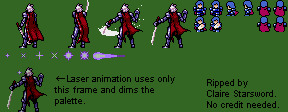



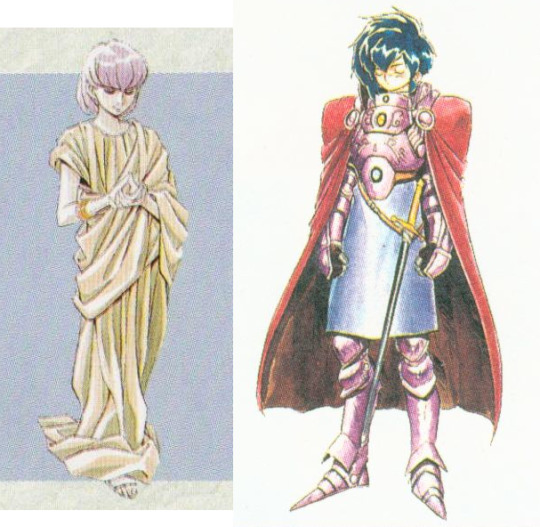

why do i keep forgetting to make this post. i’ve been wanting to make this post for weeks. Anyway here’s Oddeye, probably the last SFC3 post i’m gonna make since i wanna jump to SFC1 and 2 that have more interesting sprites. Also this post is not really about SFC3, I mostly wanted to share the concept art.
It seems that while most character designs from SF2 were done by SUEZEN, Oddeye had some contribution from Hiroshi Kajiyama, the designer for the Gaiden games and SF3 and Shining Wisdom. The concept art above is from Kajiyama, sadly i couldn’t find any more concept art so i don’t know how much each artist contributed to the final product, but I love his take on Oddler here a lot more than the final version, do give the blind character an actual cane and clothes that won’t be tripped on every five seconds. It’s also interesting that the elf ears version was discarded yet still made it to the battle sprites, likely because SF2 was A Little Rushed.
(Kajiyama also seems to be saying that he had a hard time working with SUEZEN, but I couldn’t fully translate that part so take it with a grain of salt)
#shining force#shining force 2#shining force final conflict#shining force chronicles 3#sfc3 comparisons#sf2 oddeye#spritesheet#sprite rips
2 notes
·
View notes
Photo

423 notes
·
View notes


